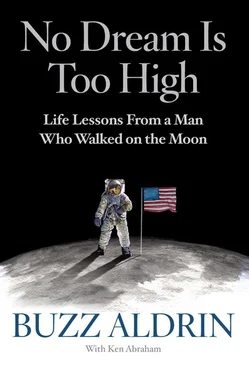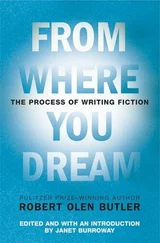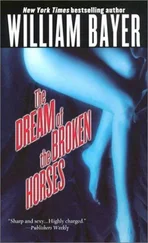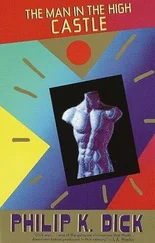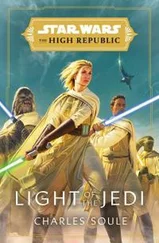Giving voice to a surprise that only he; Mike; our fellow astronaut Charlie Duke, who was serving as our spacecraft or capsule communicator (CAPCOM); and I knew about, Neil spoke the words “Houston, Tranquility Base here. The Eagle has landed.” Nobody else on Earth knew that we were going to call our little portion of the Moon “Tranquility Base,” and even Charlie seemed slightly caught off guard.
“Roger, Twan …” he started to mispronounce the name, and then corrected himself. “Tranquility.”
Although few people were familiar with Tranquility Base, everyone in the world understood the significance of the latter part of Neil’s calm declaration. “The Eagle has landed.” Human beings were on the Moon!
* * *

ONE OF MY ASSIGNMENTS while on the surface was to literally kick up some Moon dust and observe the dust’s “scuff/cohesion/adhesion” qualities. Because there is no air on the Moon, and only one-sixth of the gravity we are accustomed to on Earth, each kick of my boot sent Moon dust spraying out from my boot and falling back to the surface in perfect little semicircles, appearing almost like a handheld fan.
I was intrigued by the Moon dust, so while Neil was collecting rock samples, I borrowed the camera. I looked around the lunar surface for an undisturbed area where we had not walked so I could take a shot of a footprint. I found a good location and took a picture of the gray surface. Then I carefully pressed my foot down right in the center of the flat area I had photographed—sort of a “before” and an “after” shot. Barring obliteration by an asteroid or future human disturbance, I realized that the single, solitary footprint showing impressions made by the treads of my boot would remain intact on the lunar surface for thousands of years, convincing future explorers that man had indeed walked on the Moon.
But the more I looked at the footprint, it struck me, Hmm, that isolated print is rather lonely looking . So I had another idea. I’m going to put my foot down on the surface and then pull my boot up and away from the footprint, but only slightly, still keeping my boot in the frame .
The resulting photograph of my foot and footprint on the Moon became another famous piece of history, a symbol of human beings’ passion to explore, and a powerful reminder that the sky is not the limit, because there are footprints on the Moon. Those bootprint photos are among the few that I took while on the Moon.
When Neil and I got back in the Eagle , we took off our heavy backpacks, and along with other unnecessary items such as our boots and our specially designed, 70-millimeter Hasselblad camera, we placed them in garbage bags and tossed them out on the lunar surface. Those items are still on the Moon today. In retrospect, we probably should have tossed out our helmets rather than the boots—that might have had more historic significance—and the Hasselblad camera; the helmets were much heavier, but there was always the possibility that we might still need them. Perhaps future space environmentalists will find our castoffs and criticize us for so inconsiderately discarding our “trash,” but we dared not take off with one ounce more than planned, and we had already picked up some weight with the more than 45 pounds of rocks we had gathered on the Moon to take back to Earth for study.
We left a commemorative plaque on the lunar surface. Dated July 1969, the plaque depicts the two hemispheres of the Earth and reads: “HERE MEN FROM THE PLANET EARTH FIRST SET FOOT UPON THE MOON. WE CAME IN PEACE FOR ALL MANKIND.”
* * *

I’VE LEARNED MUCH ABOUT MYSELF since the Eagle whisked Neil and me off the lunar surface all those years ago. I’ve experienced my share of ups and downs, some successes and failures; I’ve met a lot of interesting people, and I’ve had a lot of fun. Some of the lessons I’ve learned have been painful; others have been hilarious. All have helped shape me and have served me well. I know the lessons I will share with you in this book work , because I have tested them for more than 86 years. They have worked for me, and I believe that if you will adapt them to your circumstances, they will serve you well, too.
One truth I have discovered for sure: When you believe that all things are possible and you are willing to work hard to accomplish your goals, you can achieve the next “impossible” dream. No dream is too high!
• CHAPTER TWO •
KEEP YOUR MIND OPEN TO POSSIBILITIES.

I’ve often said, “Your mind is like a parachute: If it isn’t open, it doesn’t work.”
Innovators and explorers like to ponder what might be possible, not merely what is expected. That’s why I try to stay open to new ideas. I’m constantly dreaming up new things, sketching new rocket designs, and looking for new areas to explore.
“Innovation” is my middle name … unless I decide to change it to “Lightyear.” In fact, one of the awards of which I am most proud is the Lifetime Innovation Achievement Award I received in 2015 from New Jersey, the state where I lived as a boy.
Speaking of my name, people often ask me, “Colonel Aldrin, is Buzz your real name?”
The answer is yes. Although my parents named me Edwin Eugene Aldrin, Jr., when I was born, Fay Ann, my two-year-old sister, had difficulty pronouncing “brother,” so she called me “Buzzer.” No doubt, over the years, a few people have called me “Buzzard,” but from the time I was a baby, the name Buzz has been a part of my life. Years later, after Apollo 11, and after my father, for whom I had been named, passed away, I legally changed my name simply for the convenience and clarity. But although Buzz is now my real legal name, innovation is my guiding spirit. I’ve always been quick to try new ideas, especially new ways of doing things in space.
During the early years of space exploration, a number of the initial Russian cosmonauts and American astronauts had experienced nausea during their first trips into space. Their bodies simply weren’t accustomed to the unusual sensations and disorientation brought on by trying to move and work in a weightless environment. In preparation for my Gemini 12 space walk, I welcomed the opportunity to become the first astronaut trained underwater in a swimming pool to simulate the effects of neutral buoyancy, trying to maneuver in a weightless environment in space. Some of my colleagues thought I was being eccentric, but the sensations in the pool prepared me for what it might feel like drifting along at 17,500 miles an hour, tethered to a spacecraft.
Ironically, in space exploration, as in business or any other area of life, past success can be the greatest obstacle to future innovation. Even wonderfully brilliant people can become entrenched in the status quo, stuck in the usual way of doing things. One of the greatest impediments to discovery is the attitude that says, “We don’t do things that way,” or its counterpart, “We’ve never done things that way.” Which basically means, “I don’t want to change.”
So we’ve never done it that way before? Great! Let’s try something new; let’s come up with a different approach, another way of reaching our goals. You have to stay open to the possibilities. Remember, your mind is like a parachute: If it isn’t open, it doesn’t work. So keep an open mind!
It was a man with an open mind who made it physically possible for human beings to land on the Moon. Many people have never heard of him, but John Houbolt was the man who may have saved the space program.
Читать дальше
